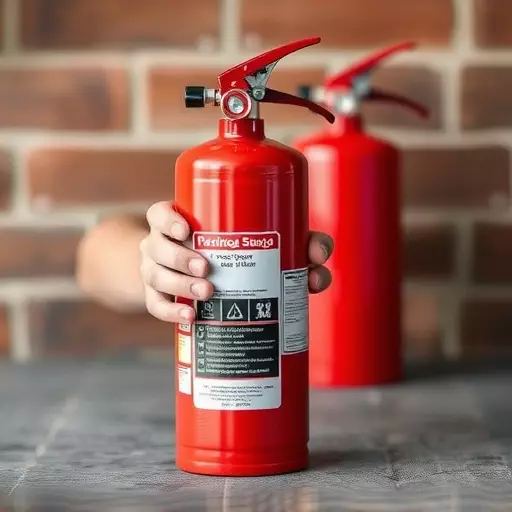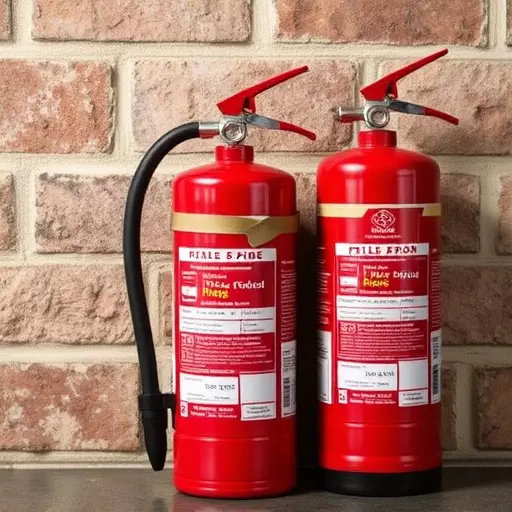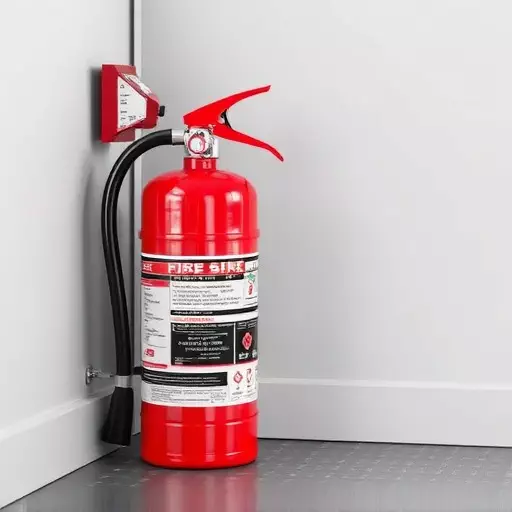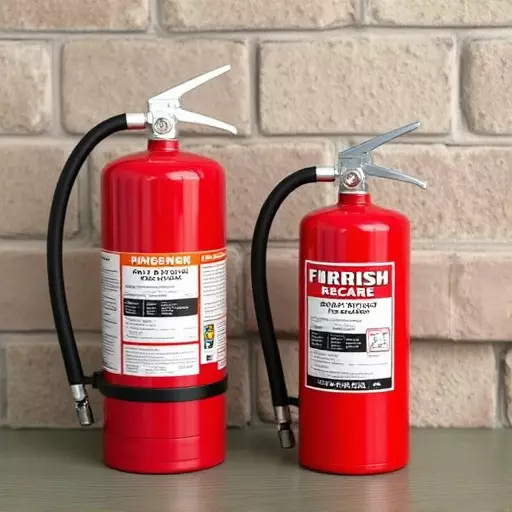Regular fire extinguisher recharge in Spring Lake is vital for safety and effectiveness. These devices, relying on pressure systems, degrade over time requiring resetting, inspection, and part replacement. Recharging offers cost savings, environmental benefits, and peace of mind, ensuring community readiness to handle fires. Adhering to local regulations and national guidelines, like NFPA standards, ensures compliance, optimal performance, and business continuity through regular recharge services. The process involves thorough inspection, agent discharge, filling, pressure testing, and component securing, ultimately extending equipment lifespan during emergencies.
In many residential and commercial spaces, fire extinguishers serve as crucial lifelines in case of emergencies. However, proper maintenance is essential to ensure their effectiveness. This article delves into the common mistakes to avoid during fire extinguisher recharge, focusing on Spring Lake, NJ, where local regulations and safety standards play a pivotal role. We guide you through understanding replacement needs, the step-by-step recharge process, benefits of recharging over replacement, and critical errors to prevent for reliable performance.
- Understanding Fire Extinguisher Replacement Spring Lake
- – Importance of fire extinguishers in residential and commercial spaces
- – Role of local regulations and safety standards in Spring Lake, NJ
- Fire Extinguisher Recharge Process: A Step-by-Step Guide
Understanding Fire Extinguisher Replacement Spring Lake

In many cases, folks overlook the significance of regular fire extinguisher recharge in Spring Lake, mistaking it for a simple maintenance task. However, understanding the recharging process is paramount to ensuring these life-saving devices remain effective when needed most. Fire extinguishers are designed with a pressure system that utilizes a spring to deliver fire suppressing agent. Over time, this crucial component depreciates, reducing the extinguisher’s efficiency and potentially rendering it useless in an emergency.
The benefits of fire extinguisher recharging extend beyond just maintaining functionality. It also offers cost-effectiveness, environmental stewardship, and peace of mind. Recharging involves resetting the pressure system, inspecting internal components for wear or damage, and replacing any worn parts as necessary. By doing so, you not only prolong the life of your fire extinguisher but also contribute to a safer Spring Lake community, prepared to face potential fires with reliable equipment.
– Importance of fire extinguishers in residential and commercial spaces

Fire extinguishers are indispensable safety tools in both residential and commercial settings. They serve as a rapid response to fires, allowing users to suppress or control small blazes before emergency services arrive. In homes, fire extinguishers provide a sense of security, empowering residents to handle emergencies effectively. Similarly, in commercial spaces like offices, retail stores, and industrial facilities, they play a critical role in minimizing damage, saving lives, and maintaining business continuity.
Regular maintenance, including proper recharge and replacement, is crucial for fire extinguisher effectiveness. Spring Lake residents and businesses should understand the benefits of recharging their extinguishers. This involves removing the old fire suppression agent, cleaning the device, and refilling it with fresh material according to the manufacturer’s specifications. A well-maintained fire extinguisher ensures its readiness when needed most, making it a vital component in any comprehensive safety plan.
– Role of local regulations and safety standards in Spring Lake, NJ

In Spring Lake, NJ, the role of local regulations and safety standards is paramount in ensuring proper fire extinguisher maintenance, including timely recharge. Adhering to these guidelines is not only a legal requirement but also a vital step in safeguarding lives and property. The fire extinguisher replacement and recharge process in Spring Lake must comply with stringent national and state safety standards, such as those set by the National Fire Protection Association (NFPA). These standards dictate the frequency of recharging, types of extinguishers required for specific hazards, and testing protocols to ensure each unit remains fully functional when needed.
By following these regulations, businesses and residents in Spring Lake can leverage the benefits of fire extinguisher recharging, including extended lifespan, optimal performance, and cost savings. Regular recharge services eliminate the risk of using a defective or outdated extinguisher, which could prove ineffective during an emergency. Moreover, proper recharge practices help maintain the integrity of the extinguisher’s seal and pressure system, ensuring its readiness when a fire breaks out.
Fire Extinguisher Recharge Process: A Step-by-Step Guide

The fire extinguisher recharge process involves several meticulous steps to ensure its effectiveness and safety. It begins with inspecting the extinguisher for any signs of damage, corrosion, or wear. This includes checking the pressure gauge and ensuring the pin is in place. Next, the recharging equipment is prepared, often consisting of a specialized cylinder, valve, and filling connection. The old agent is then discharged from the extinguisher, typically through a venting process to prevent contamination.
Once the extinguisher is empty, the recharge process starts by connecting the charging apparatus and filling the container with the appropriate fire-extinguishing agent. This could be dry chemical, water, or other specialized agents depending on the type of extinguisher. After filling, the system is pressure-tested to guarantee proper functionality. The final step involves resetting the gauge, ensuring all components are secure, and verifying the extinguisher’s readiness for use with a final inspection. Regular fire extinguisher recharging, such as when performed by professionals in Spring Lake, offers numerous benefits, including extended equipment lifespan, maintained performance, and peace of mind knowing that life-saving gear is always ready for use in an emergency.


